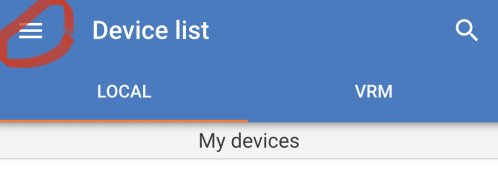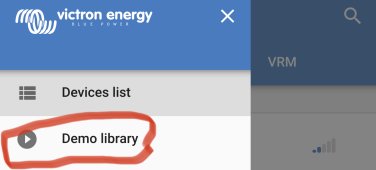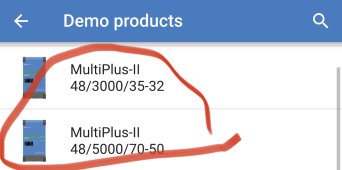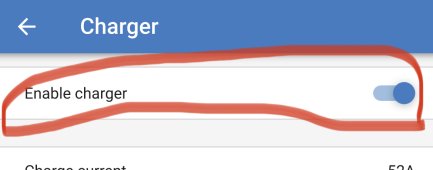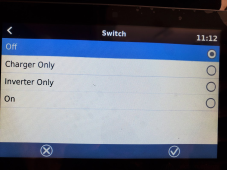If you had read a few posts down, you would have seen that I revised what I posted. The idea that I was trying to get across is that you don't want the Multiplus to be charging the batteries when you disconnect the batteries.
For what it's worth, here are the Multiplus switch options when working with the Cerbo GX/Touch 50.
View attachment 121919
Seems like you're still trying to convey ideas that aren't consistent with the product installation instructions, when I read this... You connect the batteries before you turn it on, not the other way. My current understanding is that this isn't an inverter that is normally operated without batteries, and I don't understand the motivation to attempt this.
As I covered in another post, there are other inverter settings that would make it start using the batteries even when operating in "on" with AC passed through.
Just because you found a switch doesn't mean you're supposed to be using it. I personally would use the Off setting and turn the AC output off entirely. If somebody has more formal training on this subject, please correct me, I have only reviewed a small portion of Victron's training probably.
If this is a regular occurrence on a critical system, you need to bring an automatic transfer switch in AFTER the inverter (turn a generator on, turn the inverter off after loads switch), or move the critical loads to a pure sine wave UPS then just turn the inverter off.
That doesn't mean I wouldn't add batteries to my own system while generating power, as long as it meant I didn't have to shutoff the other batteries to do it, the inverter always has battery power in this scenario.
This is another reason that busbars are better than stacking lugs. And I've done this kinda thing with stacked lugs and careful lug manuevering, with lead acid batteries to reduce disconnections to sub-seconds--but now that I'm using lithium iron phosphate I have less desire to test certain limits.



